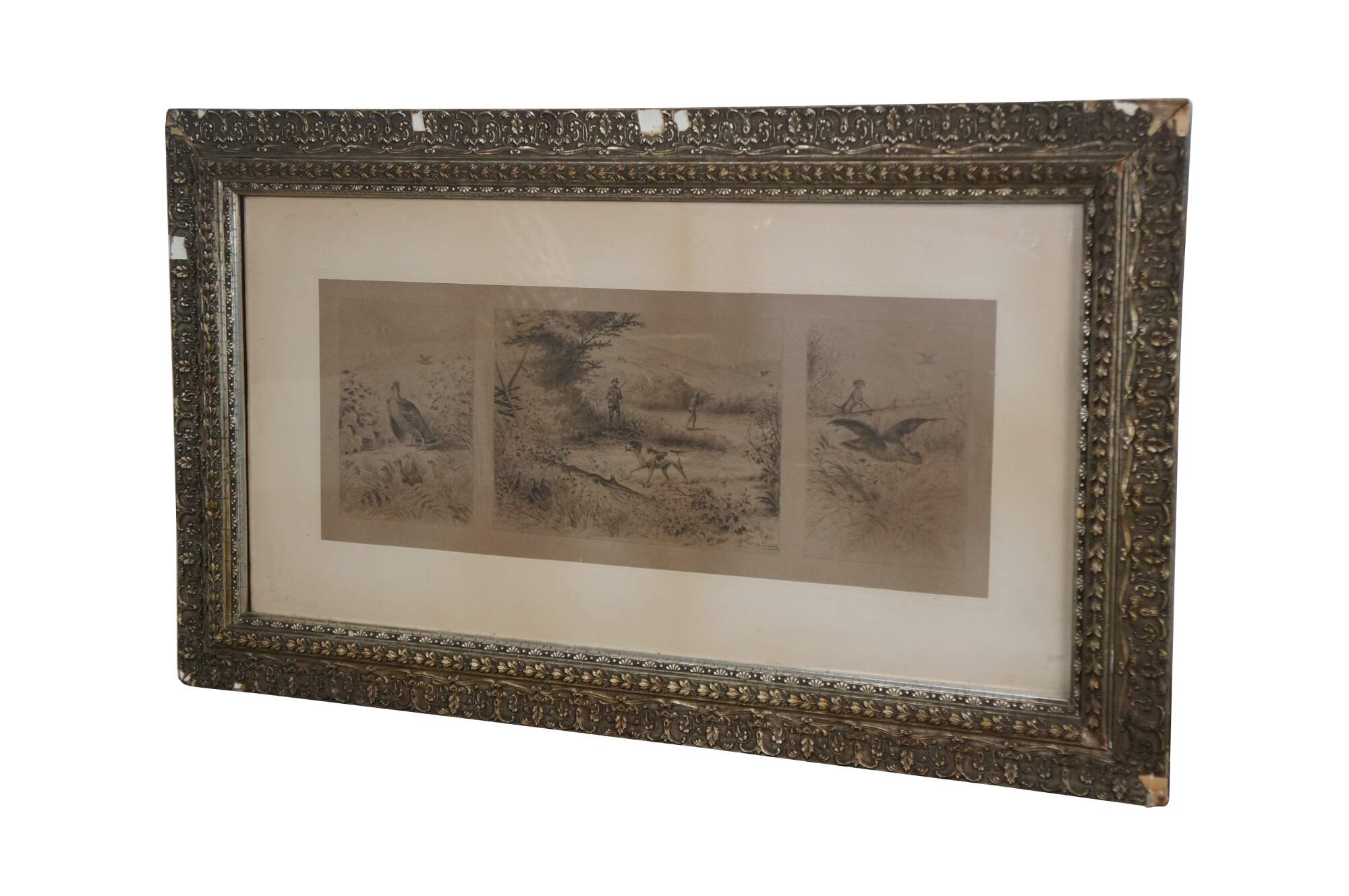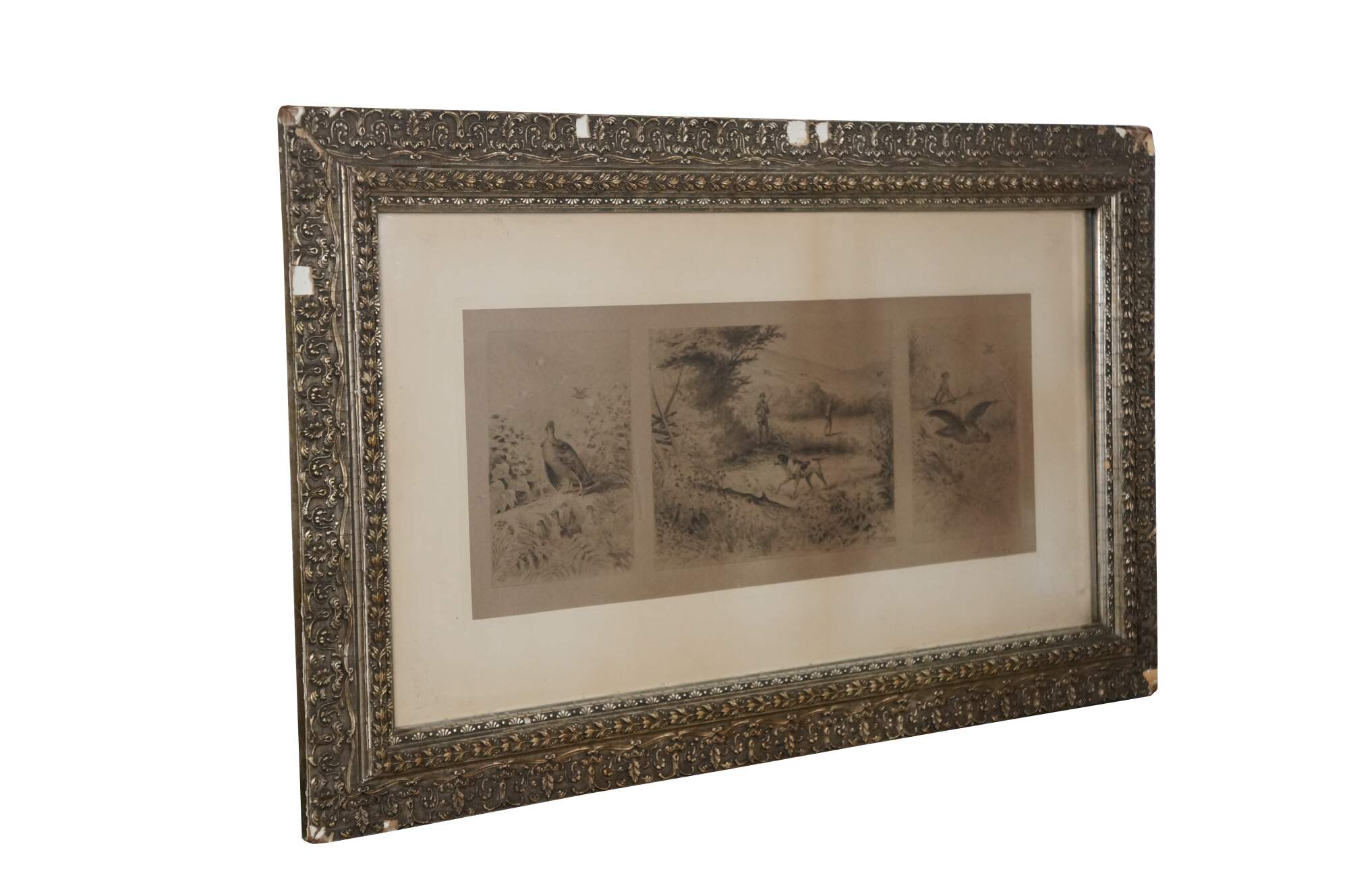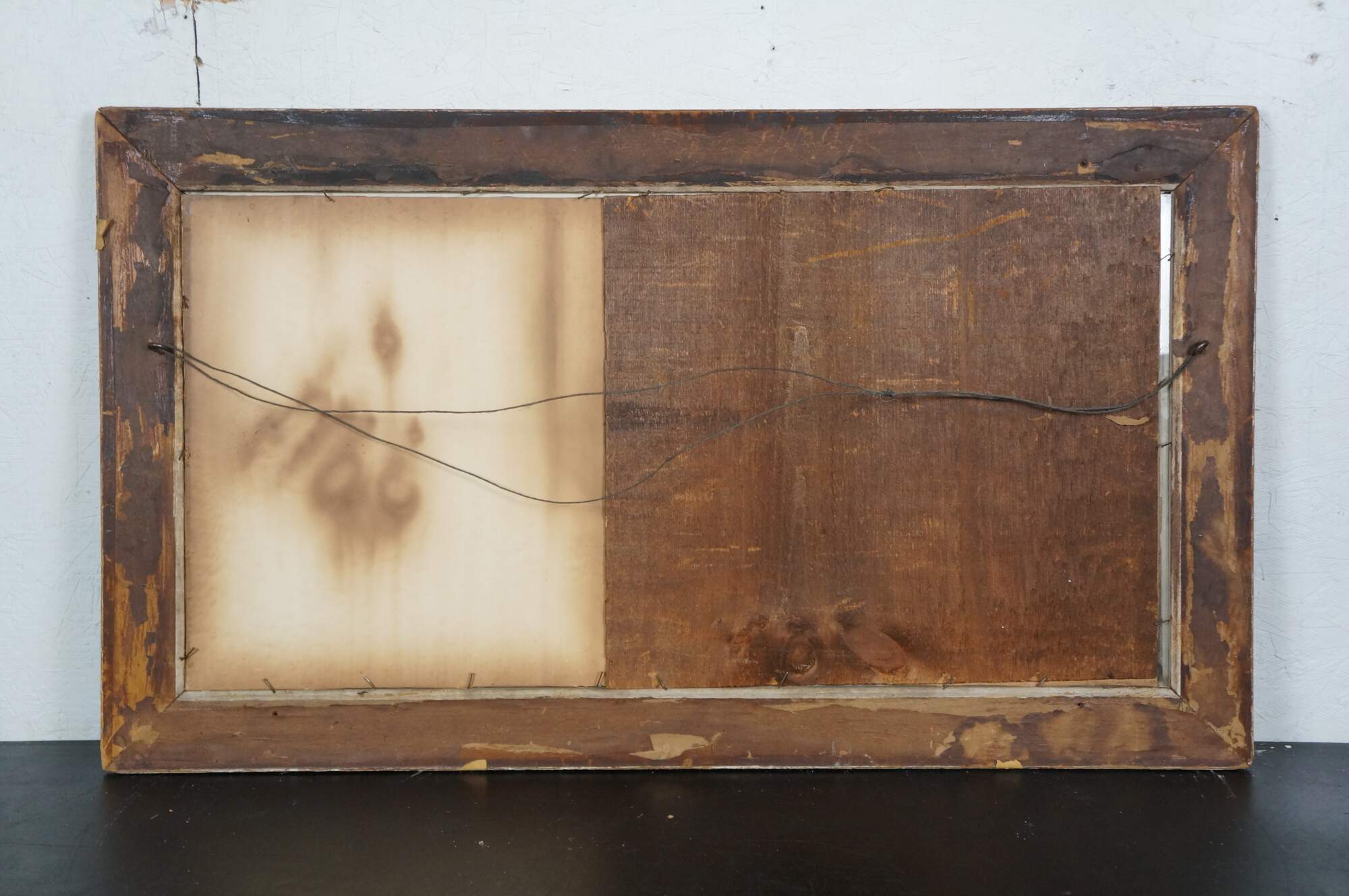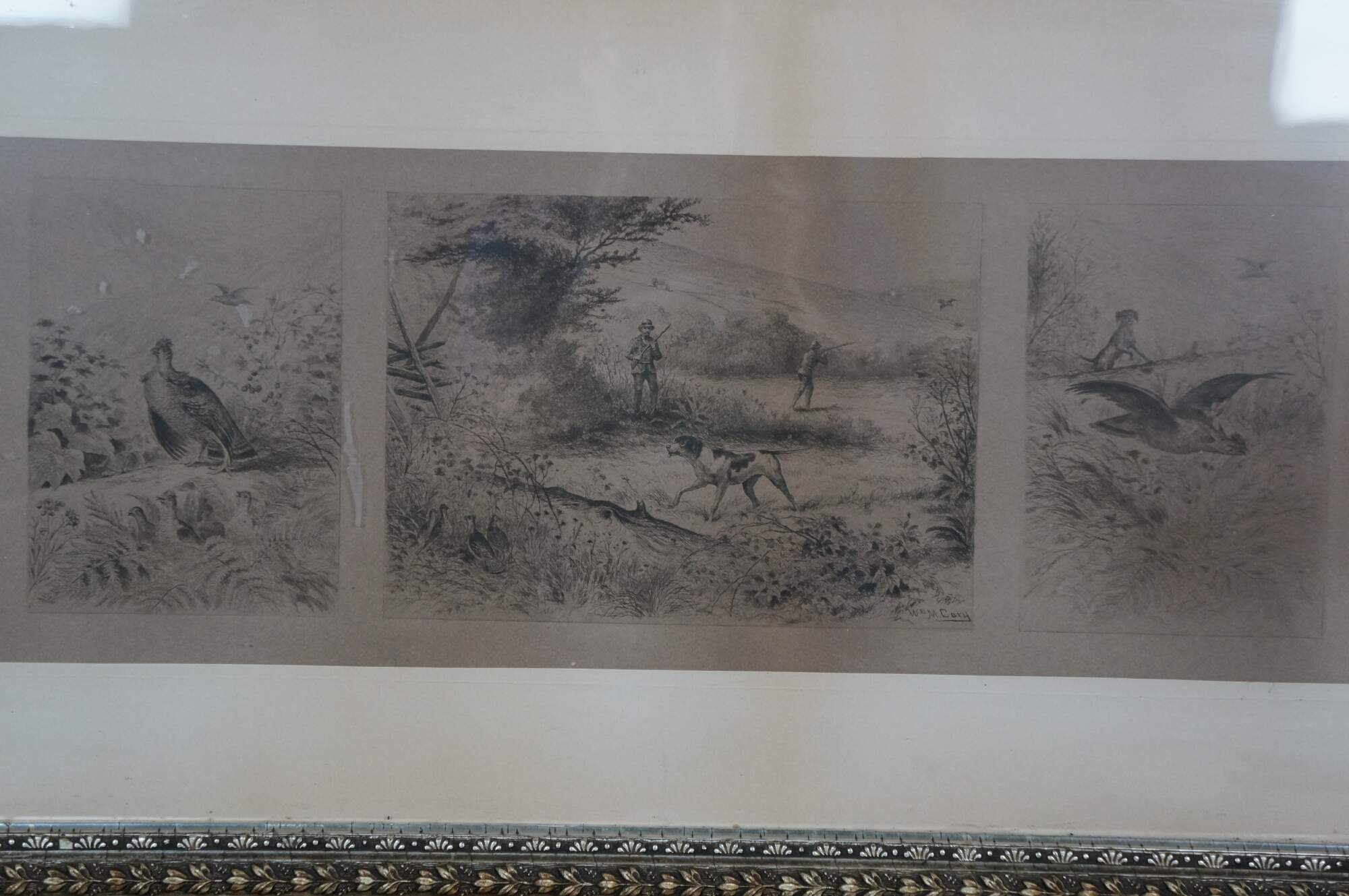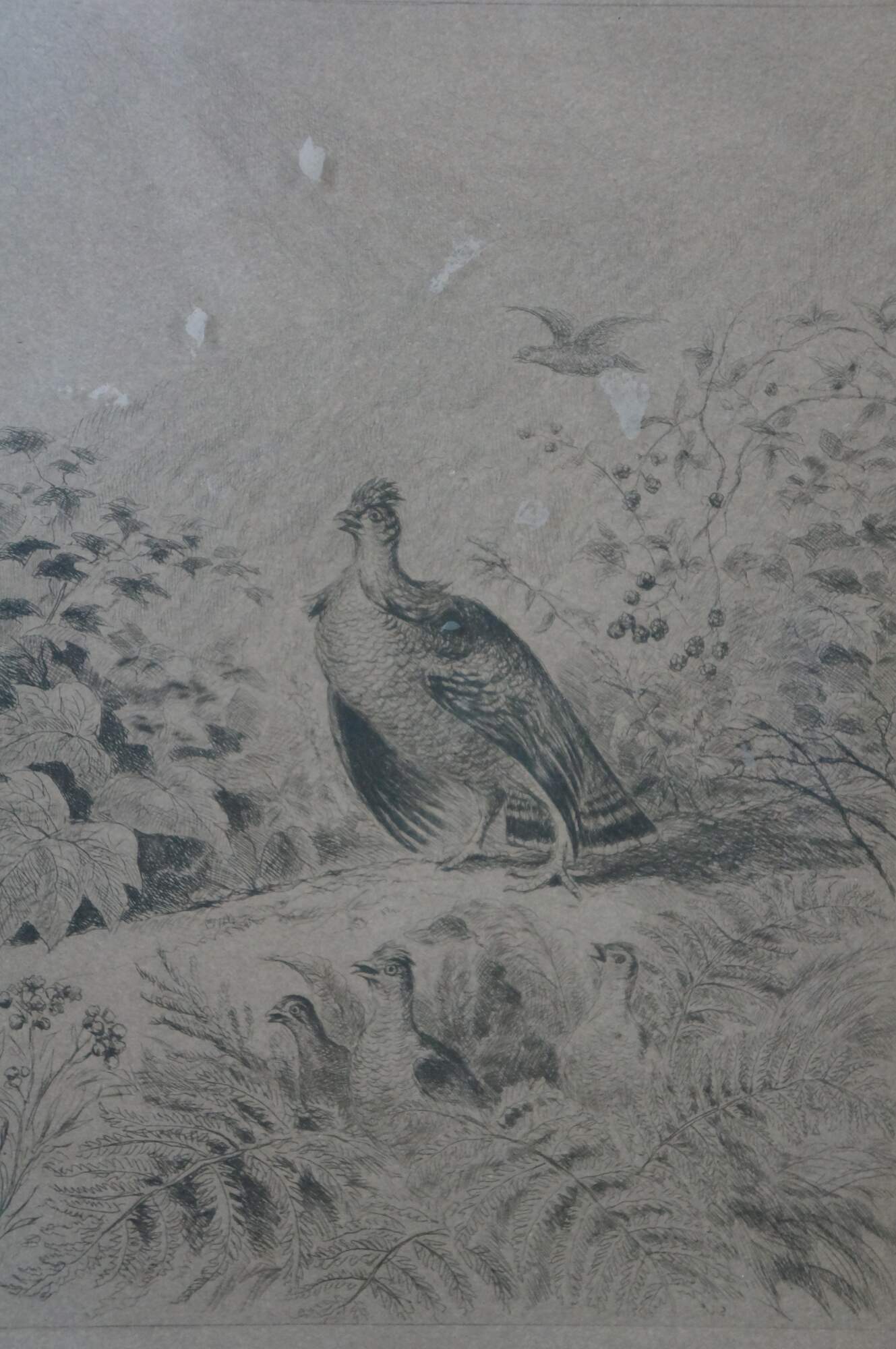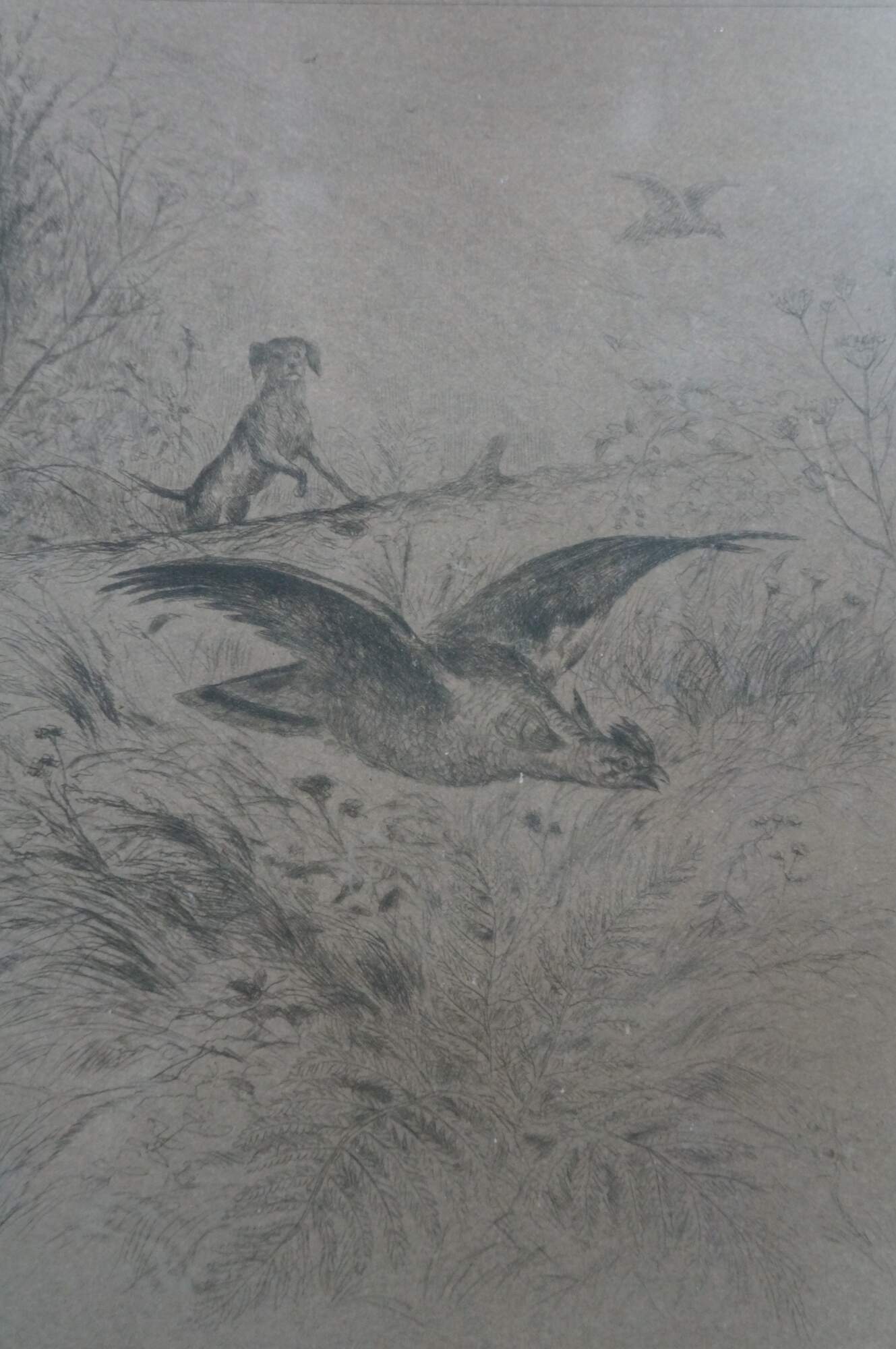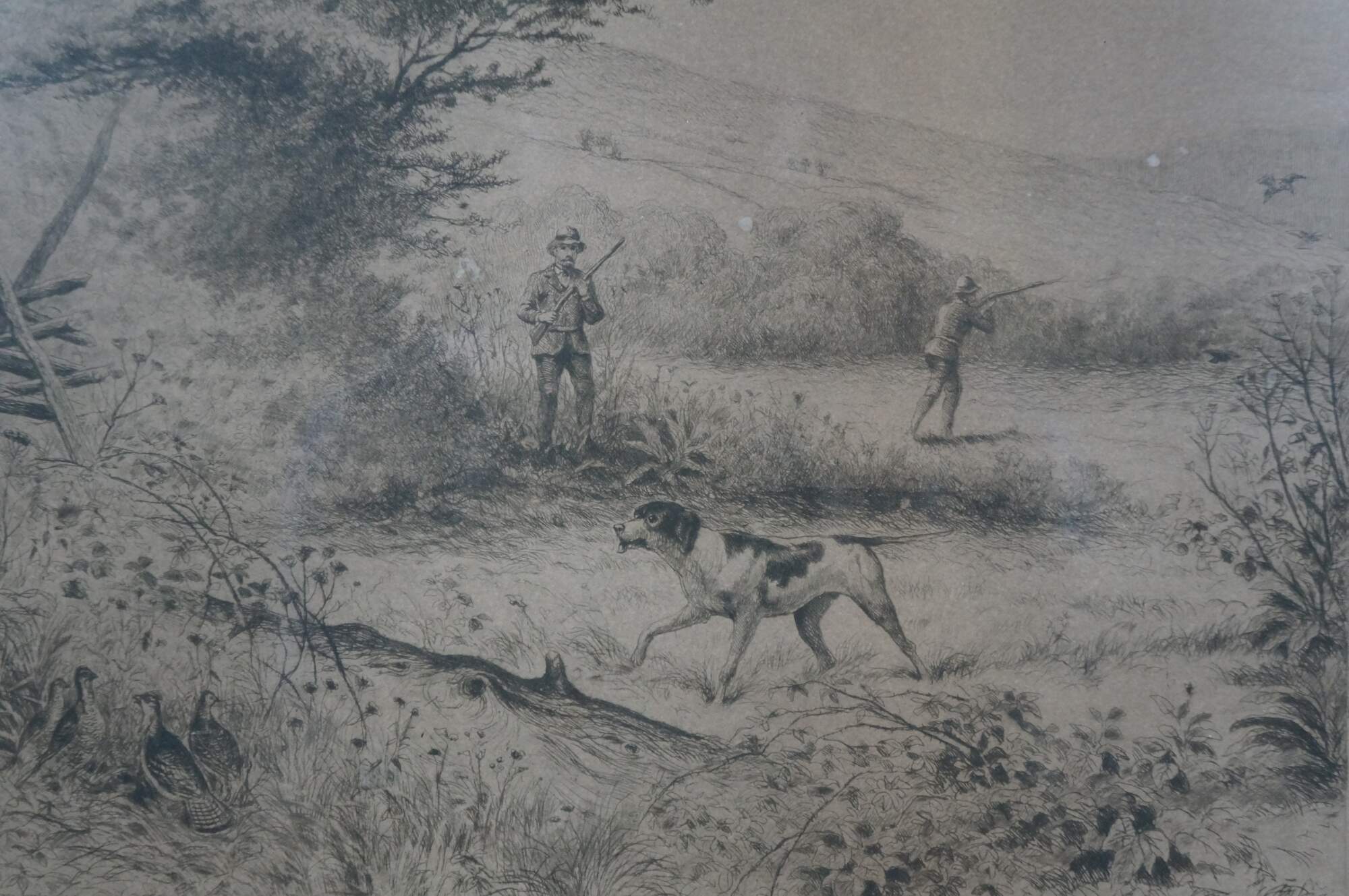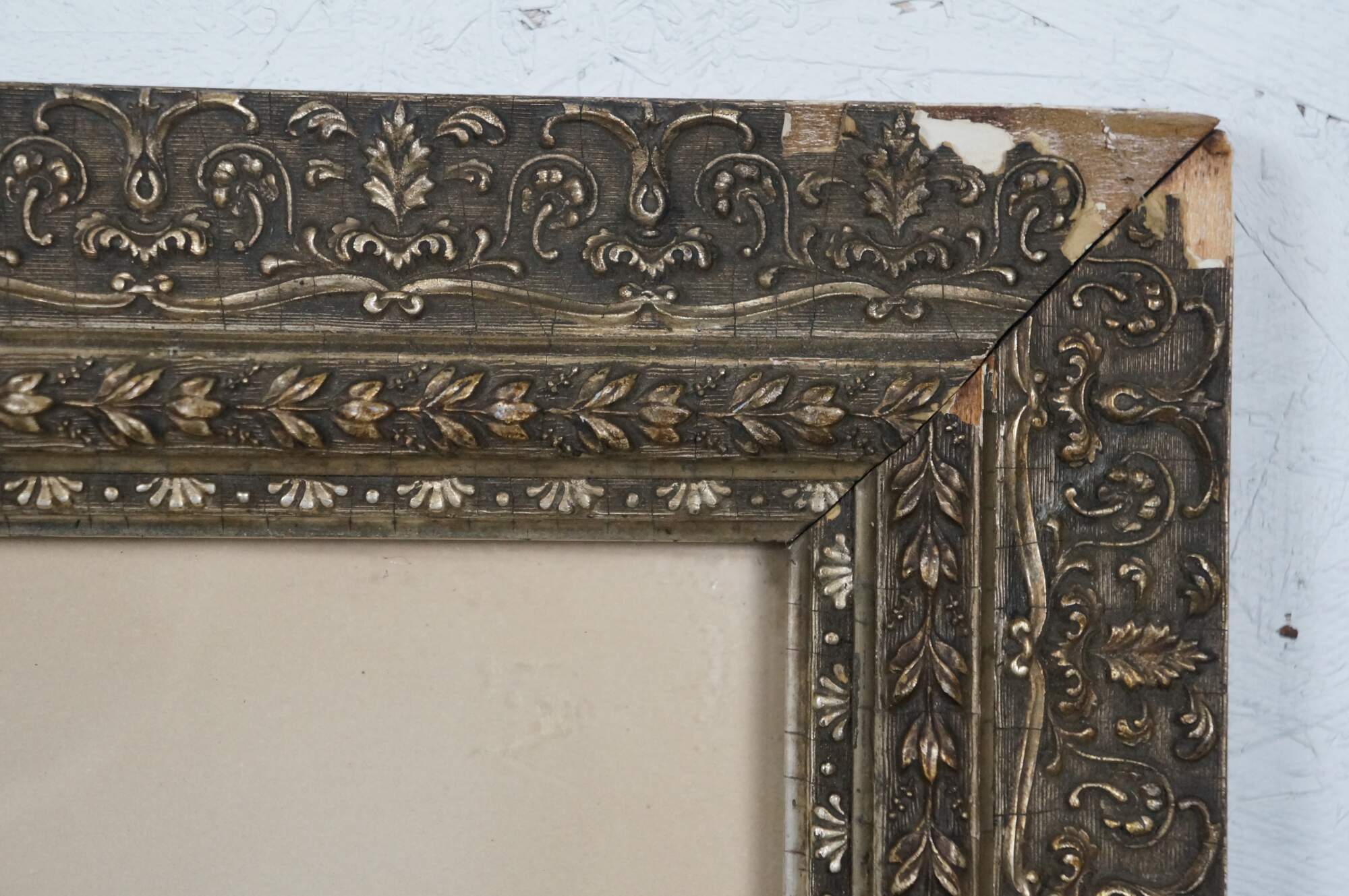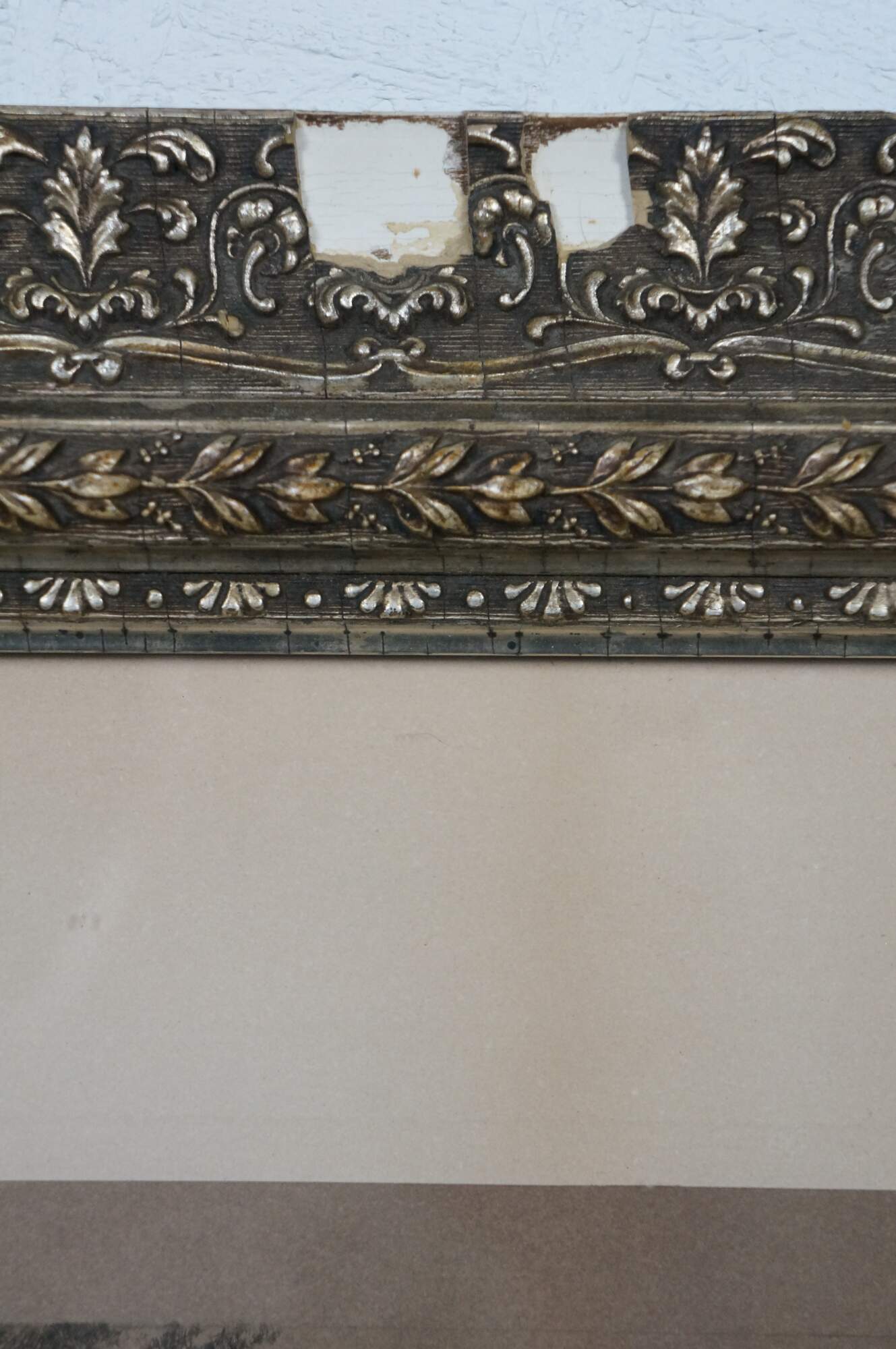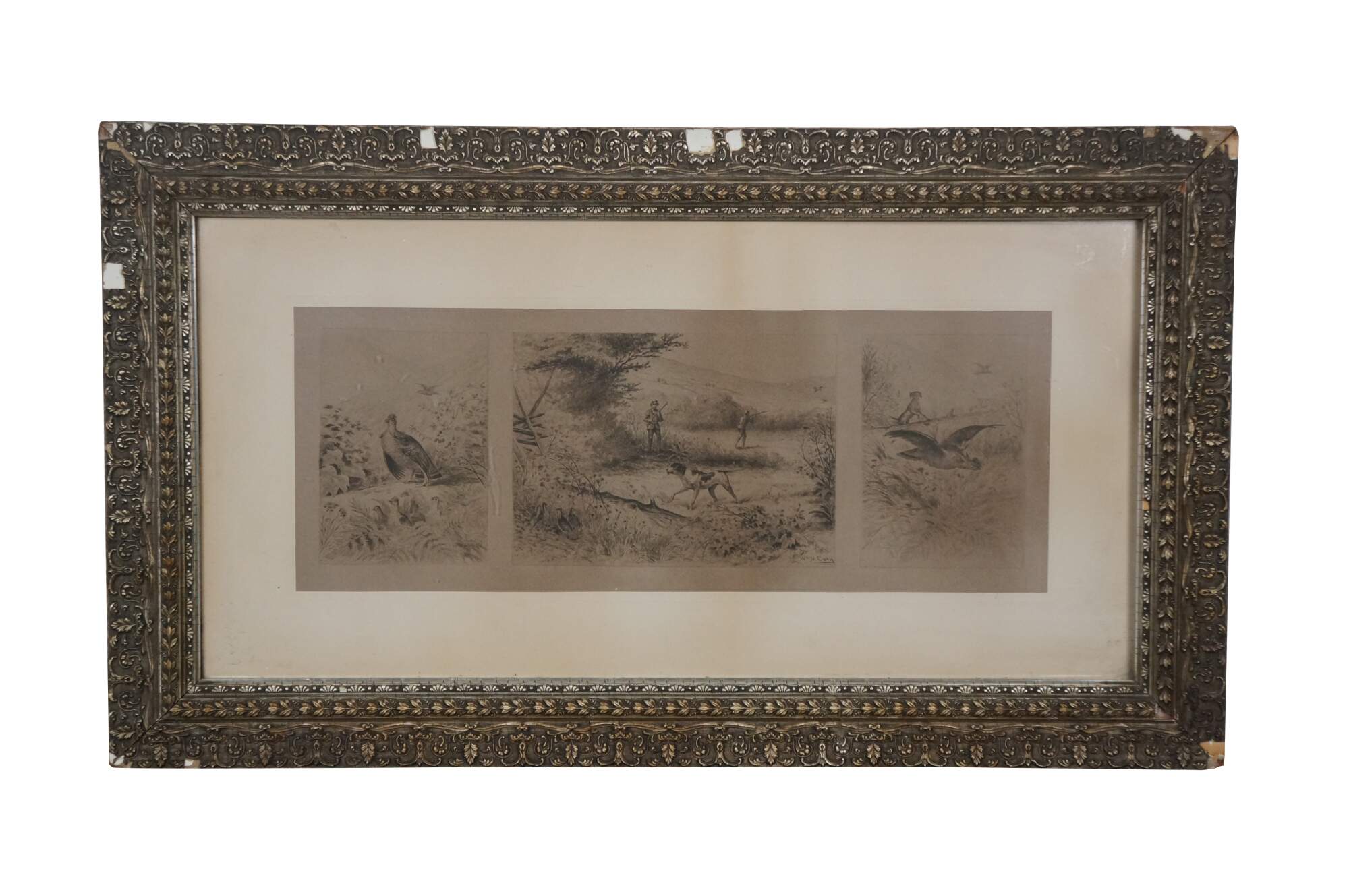
Antique William de la Montagne Cary Grouse Hunting Triptych Etching 33"
$480.00
Shipping:
Free Shipping Included
Delivery:
Estimated 2-15 Business Days
Payments:
Credit Card, Check, Cash, PayPal, Apple Pay, Venmo
Returns:
30 Days 100% Money Back Guarantee, Buyer Pays Return Shipping
Description
Late 19th century black and white etching triptych by William de la Montagne Cary. Trio of hunt scenes including a game bird / grouse / quail / pheasant by a nest, pair of hunters in a landscape with their dog, and the hunting dog in pursuit of a flying game bird. Signed in plate Wm. M. Cary in lower right of center image. Floral and foliate carved giltwood frame; white mat.
"William de la Montagne Cary (American 1840-1922) With a thirty-year career as a western illustrator based in New York City, William Cary made his first trip West in 1861 in an ox-wagon train along the Missouri River bound for Fort Benton where he narrowly escaped capture by the Crow Indians. From Fort Benton, he set out with a cook and guide and stayed at Fort Union for six weeks, where he observed life among the Assiniboine Indians nearby. He also signed on with a survey crew, which led him to the West Coast, and from there he took a ship back to New York City, In 1874, he took his second and last trip West, joining the John Mullan railroad survey to travel to Walla Walla, Washington. Most of his illustrations were based on a combination of memory and sketches from these trips. He had a widespread reputation for his illustration skills, which earned him numerous commissions from magazines including Leslie's and Harper's. He also did oil paintings, many of them of Indian women with his texts of verbiage that described the hard circumstances of these people, a reflection of the common Euro-American view of Indian life. Cary also did several paintings and an etching featuring Buffalo Bill Cody, a figure of the West that he first met in the 1860s. In 1884, Cary spent several weeks studying Cody's Wild West Show." (Source: Kodner Gallery)
Condition
Wear and distressing, chips / finish loss / wear to frame; discoloration / foxing / spotting to etching.
Dimensions
32.75" x 0.5" x 19" / Sans Frame - 27.5" x 13.5" (Width x Depth x Height)
